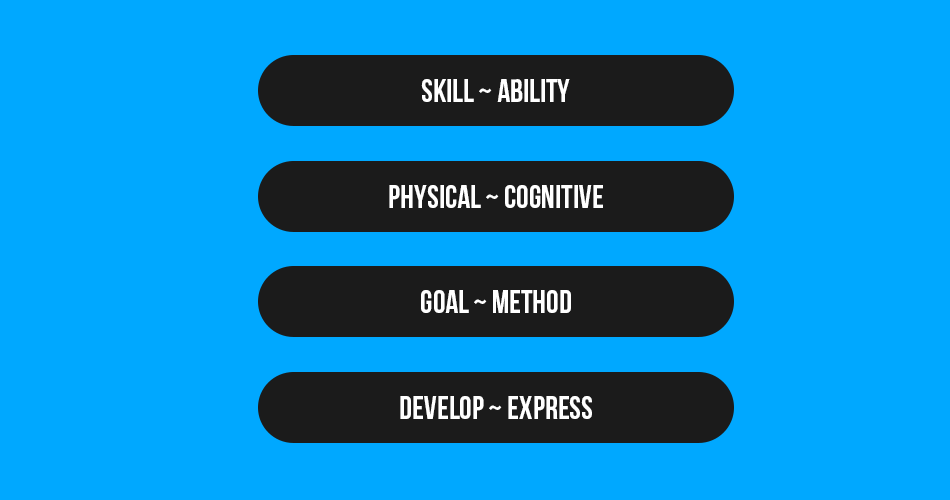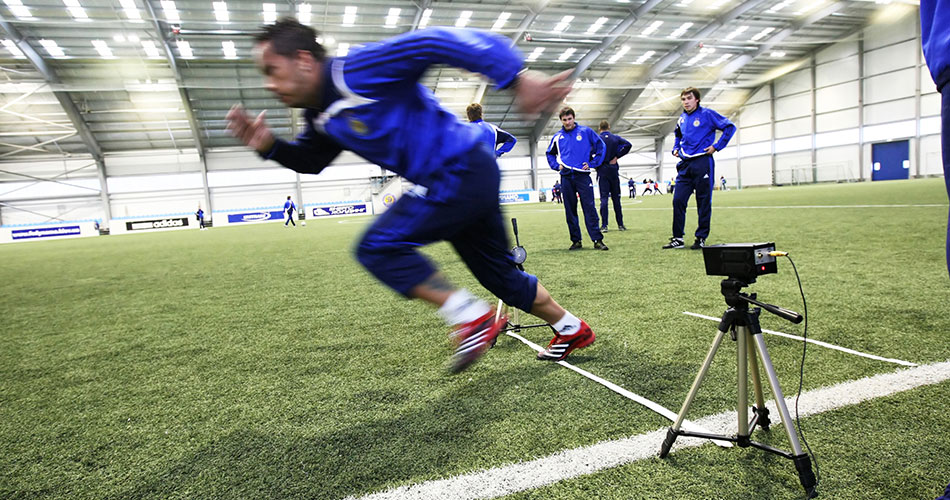Anti-Glycolytic Training for Crossfit?
I accidentally stumbled upon Strongfirst For Crossfit article, which I urge you to read. Without going into the study design (is it even published?), although I would love to recommend the author to try to make the same analysis using Magnitude-based approach (Will Hopkins) and maybe split the athlete to low-, med- and high-level to see if there are differences in training effect, I wanted to expand to Anti-glycolytic training.
There is indeed physiological rationale for such a (quality) training, but I want to focus on the philosophical aspects (I am still under the influence after reading Zen and the art of motorcycle maintenance). If you are reading Complementary Training for some time, you will immediately recognize what I want to cover, and what parallels I want to draw.
I believe there is a complementary aspect, and many expert have come to the same conclusions. For example, Issurin 1 mentions two principal pathways of adaptation: homeostatic regulation and stress adaptation mechanism:
A further consideration of the essence of acute training response underscores the role of two principal pathways of adaptation: homeostatic regulation and the stress adaptation mechanism. This differentiation immediately applies to the intensity and duration of administered workloads. As stated by Cannon, homeostatic regulation is intended to maintain constancy of the body’s internal milieu. The wide spectrum of moderately intensive workloads broadens the limits and enhances the homeostatic regulation mechanism. The spectrum encompasses the large group of training modalities intended to improve basic metabolic background, the amount and activity of oxidative enzymes, and the rate of biochemical and hormonal reactions to provide muscular effort and recovery. In terms of training theory, these modalities refer to the parts of the workouts directed at developing basic athletic abilities, i.e. metabolic and neuromuscular conditioning, motor learning and techno-tactical enhancement.
The strong training stimuli elicited in athlete by workloads of high intensity, power or velocity cause the mobilization of energy resources that exceed the metabolic level necessary for homeostatic response. These increased demands trigger a profound endocrine response, i.e., the secretion of stress hormones. When intensity exceeds 60-70% VO2max, catecholamine levels increase gradually and trigger the glycolytic metabolism. A further increase in intensity stimulates the secretion of cortisol, corticotrophin and B-endorphin, which assist in cardiovascular and metabolic adjustment to physical stress. Such exercises induce typical stress reactions as described in the classic works of Salye. They are highly characteristic of intense and severe conditioning programs and of various tasks simulating competitive activity.
Administering training that includes both types of exercises concurrently is characterized by energy needs surpassing the boundary of homeostatic regulation; the stress reactions become prevalent. The more strained metabolic and hormonal background aggravates and suppresses homeostatic responses and diminishes the training of workloads directed at basic athletic abilities. The contemporary approach to training design proposes programming acute effects in order to make the design more deterministic and to avoid the conflicting responses typical of mixed training.
I have expanded more about this in Four Important Complementary Pairs as Sharpen/Saw (or Develop/Express) complementary pair. What doesn’t cease to amaze me is that a lot of experts and coaches have come to this dichotomy. What also doesn’t cease to amaze me are the coaches who are still not aware of this phenomena.
As a martial arts practitioner, I was always considered “lazy” or “soft”, because I almost always went really easy, working on my “skill” and efficiency, over really “pushing it”, and I always stop before getting REALLY tired. That is how I train pretty much all the time, except when I really push and then I end up injured. Might be the weak mindset, might be the age, but it seems to resonate with other coaches as well.
For example, Dan John uses Park Bench vs. Bus Bench analogy, which I covered in Planning the Strength Training: The Addendum as Raise the floor vs. Push the Ceiling. The problem is that a lot of coaches push the ceiling much more frequently than they raise the floor.
In Grand Unified Theory, I identified this complementary pair as one of the crucial two: Via Positiva/Via Negativa and Potential/Realization. I guess it can be explained by both: via Positiva would be trying to increase the ability to tolerate fatigue (e.g. pushing the ceiling), where Via Negativa would be ability to not induce fatigue at all (e.g. raise the floor). Potential/Realization complementary aspect can also explain this: potential is slowly building/cooking and working on a quality and developing it (e.g. raise the floor), where working on a realization is when you really push it and “show what you got”.
As a complementarist, I believe that both of these aspects should be utilized in training. Some training systems, like Issurin’s Block Periodization Concept, but more emphasis on Raising the Floor, before he switches to Pushing the Ceiling, because he believes that they cannot be done at the same time because Pushing the Ceiling over-runs the Raising the Floor effects. This is similar in 80/20 running programs (polarized workload) as well. I guess that this doesn’t necessary need to be separated with unidirectional blocks, although that might not be the bad strategy for certain athletes in certain context (i.e. competition calendar). This could be done over a single week – for example having 1-2 Pushing the Ceiling workouts, and 4-6 Raise the Floor workout.
Going back to Crossfit, it seems that high-level competitors actually train this way, while low- and mid- levels what this “adrenaline, balls to the wall” workouts all the time. But, this doesn’t make Crossfit the unique in this regard – it is the same in running, lifting weights and so forth.
There seems to be one conflict that I wanted to cover. In training theory, we emphasize the need for the overload – where training (sometimes) must be even harder than the competition itself. So, if you are going “soft” all the time, and only using competition to go “balls to the wall”, aren’t you doing disfavor to yourself and/or your athletes? This is a good question to ask. One viewpoint could be that you might be overloading certain components of the competition (for example, working on quality in gymnastic elements, and improving your max strength with Raising the Floor approach), and thus helping with the competition itself. There is some truth to this. Other viewpoint is that you must be doing some really hard occasional workouts to actually probe the athlete, and see how he will perform under stress and use that to modify training as need. I believe that both needs to be done in training. This is very along the lines with Agile Periodization and MVP concept.
Another psychological aspect worth mentioning is that the goals might be best approached “obliquely” Planning the Strength Training article series. For example, the best diet is the one you are not aware of. It drains you less. Hence, going balls to the wall all the time, knowing that you really push the next workout because you know what is coming, is not the best long term strategy. Consistency beat intensity. This doesn’t mean that you should be slacking or going through the motions, but it means that you should be developing quality, enjoying the process and slowly cooking, without too much mental stress and over-thinking. Do what is important and do it frequently. Occasionally go ball to the wall.
Enjoy your training. Enjoy the Park Bench!
References
- 1Issurin VB. Generalized training effects induced by athletic preparation: a review. Journal of Sports Medicine and Physical Fitness. 2009.











Responses